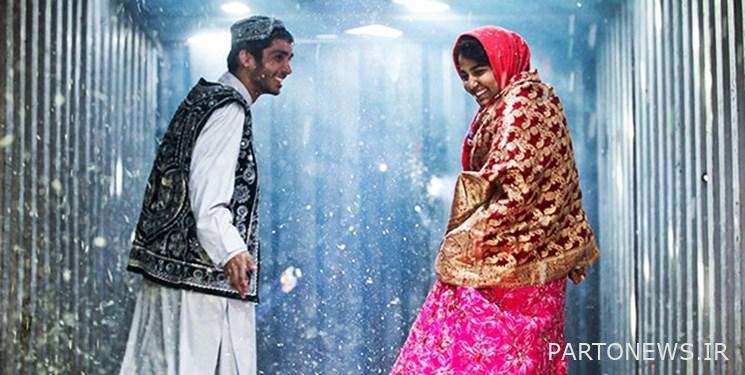Changing repetitive stereotypes and promoting the position of Afghans in Iranian cinema

According to a Fars News Agency cinema correspondent, in all the years that Iranian cinema has dealt with the people of the neighboring country, Afghanistan, the portrayal of these people in these films has been associated with the image of a war-torn immigrant and overshadowed the cultural image of the Iranian people.
Since the mid-1960s, Afghans have been seen as a stereotype as second-class citizens who have a different view of the Iranian people. They are people with financial power and social class, as well as low cultural status, for whom it has caused homelessness, unemployment, inappropriate clothing and even illness. Of course, the Afghan character in order not to worsen the situation towards an Iranian character who behaves with pride and racist views; He is obedient, persuasive and even conservative to the extent that oppression becomes one of the main characteristics of Afghan personalities. An Afghan’s efforts to maintain a family unit even deprive him of the opportunity to consider continuing his education or getting a vehicle.
In the 1970s, although he was still at a low level of social, cultural, and financial status due to his relationship with proud and racist Iranians, he now had the opportunity to work, to seek refuge, to dress better than before. He falls in love with an Iranian girl and expresses his love for her relatively boldly. For the first time, Afghan teenagers and women are featured in films who work to maintain a family, a better life and a better education. The Afghan personality has now even had the opportunity to provide himself with a bicycle that will be fruitful for him from one place to another, and with all that being said, his conservatism has diminished a little and he is protesting in some situations.
In the 1980s, traces of Iranian pride and racism were less visible, and Afghans now have the opportunity to work in a sewing workshop instead of a construction worker, to start a family with an Iranian, and even to attend university as a distinguished student.
* Afghan and Iranian characters in the films of the 90s are on a par with each other
In the 1990s, despite the fact that the characters still belong to traditional and patriarchal families and there are traces of pride and racism on the part of the Iranians, the Afghan character tries to be independent and individualistic by protesting against inequalities and defending his rights. Achieve wealth, a decent home and car, a college education, a decent job, and ultimately a better life. These highlights are such that the Iranian character is now using all his strength to fulfill the aspirations of the Afghan character.
In fact, this shows that Iranian directors who have made films based on Afghan personality, during the decades after the revolution, have gradually raised the Afghan character from an oppressed and condemned level in the social conditions of Iran to an acceptable and effective level; In such a way that Afghan and Iranian characters in the films of the 90s are on a par with each other and it can even be said that Afghans are no longer satisfied with living in Iran and emigrating from Iran.

In fact, in the 1990s, other recurring stereotypes of Afghan personality changed and the Afghan individual gradually became a prominent figure who sometimes even managed to reach a high position in society, and if racism and arrogance is seen by Iranians, it belongs to He is an ignorant or biased character who is denounced in the film and such an action cannot be generalized to the whole society.
Therefore, according to a recent study in The first issue of “Rahpooyeh Performing Arts” Quarterly It can be said that the evolution of the representation of Afghans since their arrival in Iran has been on a progressive path in the field of individual and social success.
In this study, it is said about the examined films: At first, up to 26 films were found as the statistical population of the research, which showed Afghans in the form of main, secondary characters or even in a sequence. Since the concept of representation is related to the production and reproduction of a movement and Iranians are more related to Afghans living in Iran, so the films: Golchehreh, Soil and Coral, The Last Queen of the Earth, Journey to Kandahar, Mazar-e-Sharif, Afghan Bride and 5 Evenings Their story does not take place in Iran, it was deleted. Then films such as: Paradise is Elsewhere, the image of a woman in the distance, Majnoon Lily, Me, Forever and a Day, Fireworks, etc., which showed Afghans in a supporting role or only in a sequence, were removed.
The film “Cyclists” remained on the list due to its great importance because it represents the Afghan people as the first character in Iranian cinema for the first time. In the end, 8 outstanding films were selected for analysis, in which Afghan characters all play the main role: cyclists, Friday, Rain, Lovers, Wonder, a few cubic meters of love, cape, going.

The results show that Afghans in the historical course of the films studied after the Islamic Revolution of Iran are first of all immigrants, family-oriented, conservative, obedient, simple and hardworking people who have low financial capacity, cultural status and social class. Over the years and decades after the revolution, they gradually grew up in Iran and were able to improve their financial situation, start families with the Iranian people, study at university, and even emigrate from Iran.
End of message /
You can edit this post
Suggest this for the front page

